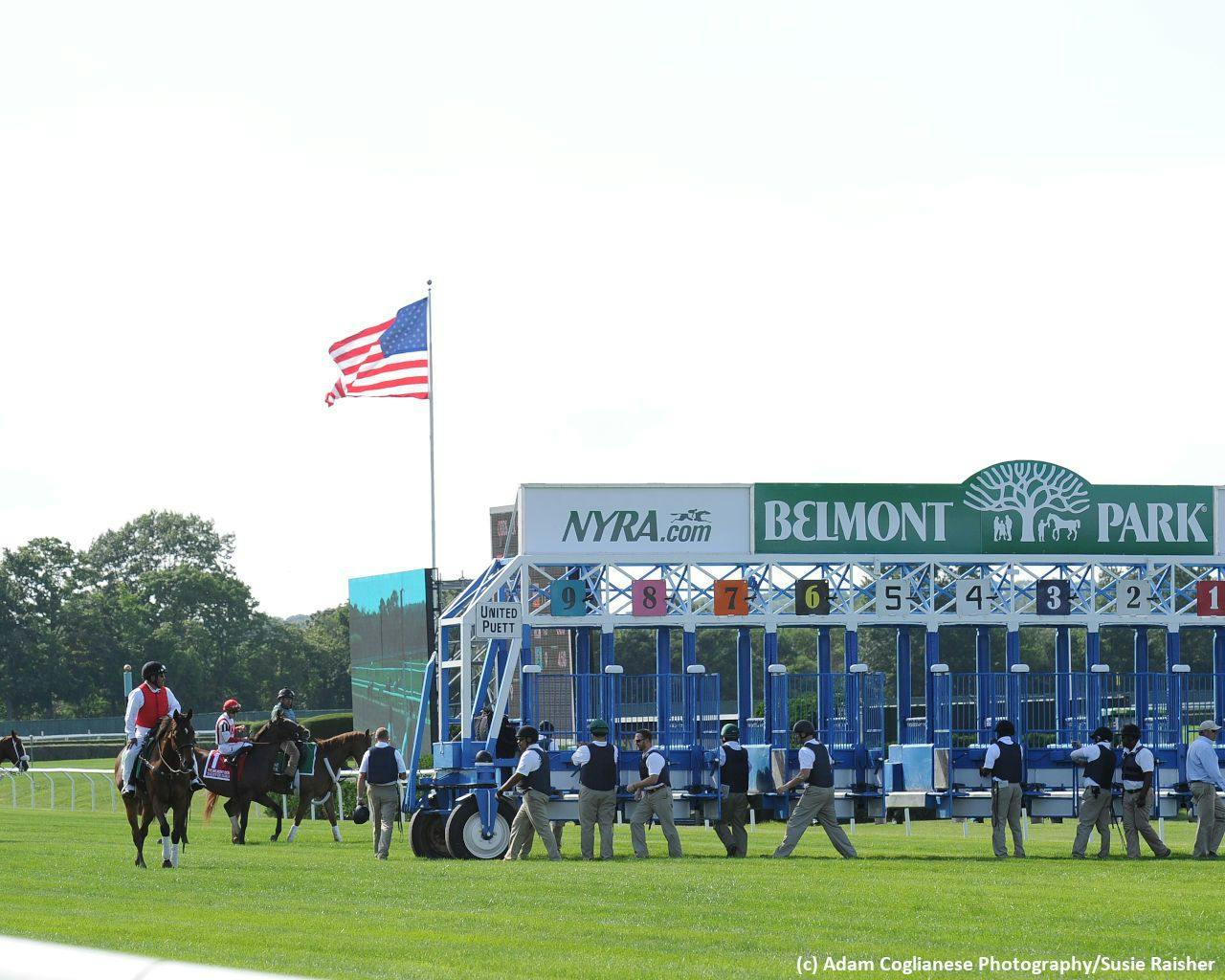Weather to have big impact on late October turf racing at Belmont

(c) Adam Coglianese Photography/Susie Raisher
A Nor’easter is blowing through Long Island, New York this week and that’s important for Belmont Park handicappers to note, not just today but for the rest of the meet up through Sunday, October 27.
Weather has a big impact on fall turf racing at Belmont and it’s something worthwhile for handicappers to watch. For the first half of the Belmont Fall Championship Meet, temperatures can still be quite hot and the turf courses often gets baked firm by a lack of rain. During the latter portions of the Belmont fall meet in October, however, things begin to soften up as the area affected by balmy weather and fall showers that keep the courses a bit moist, creating give in the ground even under “firm” conditions.
This phenomenon should happen now with a storm blowing through New York, and with only the lower late-October temperatures and limited sunshine available to firm things up on the grass the rest of the way. Horses that like super firm turf – ones who like to “hear their feet rattle” – will be out of luck the next two weeks. Many of the horses who prefer less firm footing who lost under those conditions the last month or so, will get their revenge.
Belmont firm turf in September is far different from Belmont “firm” turf of before during the second half of October when cooler temperatures, wetter conditions, and heavy use usually begin to take their toll on the turf courses by softening them up. This is especially true following a downpour like the one hitting Belmont on Wednesday. Turf conditions will be different, even under firm conditions, and handicappers should begin to downgrade front-runners and other performers who benefitted from firmer turf conditions during the first half of the meet, upgrading closers and come-from-behind types who now have a better chance to catch tiring front-runners on the less-than-firm turf.
Many grass horses will be making more than one turf start at the Belmont fall meet, and the remaining October portion of the Belmont fall meet will be filled with turf overlays and underlays as bettors focus on prior form, which was on different kind of firm turf. Belmont turf winners from September are bet too heavily in late October based on how they finished on firmer ground. Most horses rarely run the same way in their turf starts later in the Belmont meet and there is always room for improvement.
This angle is a particularly effective moneymaker when you see front-running horses who benefited from the course conditions early in the meet. They can be downgraded as probable underlays when the turf plays much less kind to speed in the closing weeks. At the same time, you can also catch overlay prices on live turf closers and stalkers who tend to win more often later in the meet after they’ve flopped earlier in the meet. As a side note, when it rains, the inner turf typically dries out faster than the outer course, so always try to keep that in mind when evaluating horses that prefer good, yielding, or soft turf versus the ones who like to hear their feet rattle on firm ground.
ADVERTISEMENT


